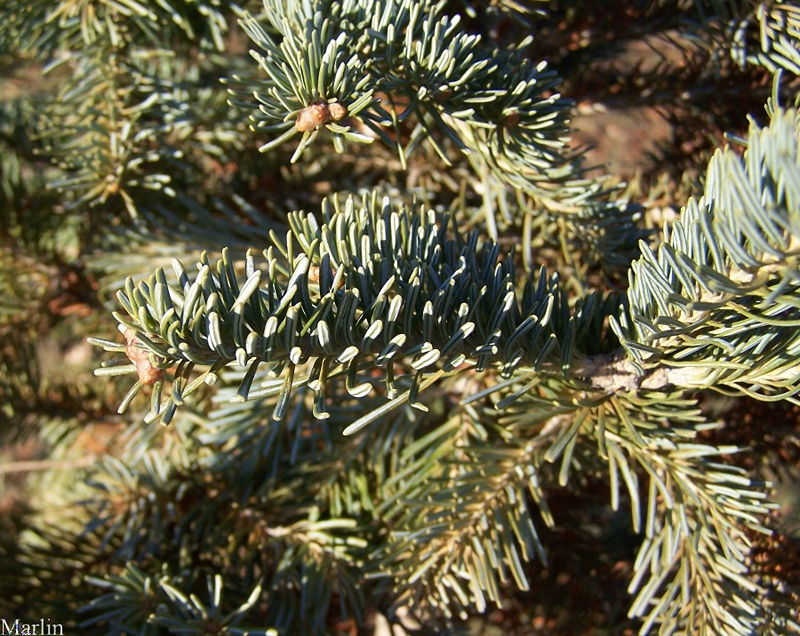Subalpine Fir
Abies lasiocarpa
Subalpine fir is long-lived true fir indigenous to the western United States.
Two varieties are recognized: the typical variety (Abies lasiocarpa var. lasiocarpa) and corkbark fir (Abies lasiocarpa var. arizonica). The latter, readily distinguished by its peculiar, whitish, corky bark, is restricted to the Rocky Mountains of southern Colorado and the Southwest.
Flowering and Fruiting- Subalpine fir flowers are monoecious. Male flowers, usually abundant, are borne in pendulous clusters from the axils of the needles on the lower branchlets. Female flowers are fewer, borne erect and singly on the uppermost branchlets of the crown. Male flowers ripen, and pollen is wind-disseminated, during late spring and early summer. Cones are indigo blue when they open in mid-August to mid-October. Seed ripens from mid-September to late-October.
Seed Production and Dissemination- Subalpine fir may begin to produce cones when trees are 1.2 to 1.5 m (4 to 5 ft) tall and 20 years old, but under closed-forest conditions, seed production is not significant until trees are older and taller. Corkbark fir does not begin to bear cones until about 50 years old. Maximum seed production for subalpine and corkbark fir occurs in dominant trees 150 to 200 years old.
Subalpine fir is a good seed producer in the Pacific Northwest and in the Rocky Mountains of Idaho and Montana, with good to heavy crops borne every 3 years, and light crops or failures in between. It is as good a seed producer as most associated true firs, but not as good as the hemlocks and Engelmann spruce.

References:
1. Karen R. Hall and Richard R. Braham, NATIVE PINES OF EASTERN NORTH AMERICA
2. USDA Forest Service Silvics Manual “Abies lasiocarpa”

